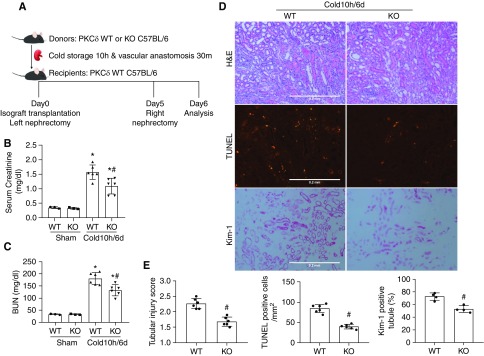Figure 6.
PKCδ-deficient grafts have better renal function and less injury as life-supporting kidneys. (A) Diagram showing the experimental design. The left kidney was collected from PKCδ-KO or WT mice for 10 hours of cold storage, followed by transplantation into WT recipient mice. At day 5 post-transplantation, the native kidney of the recipient mouse was removed so the transplanted kidney became the life-supporting kidney. At day 6, the transplanted kidney and blood samples were collected for analysis. The right kidney of donor mice without cold-storage transplantation was used as sham control. (B) Serum creatinine measurement. (C) BUN measurement. (D) Representative images of hematoxylin and eosin (H&E) staining, TUNEL assay, and Kim-1 immunohistochemistry. (E) Quantitative analysis of tubular damage, TUNEL-positive cells, and Kim-1–positive tubules. Data are expressed as mean±SD (n=4–6). *P<0.05 versus the respective sham-operated grafts, #P<0.05 versus transplanted WT.

